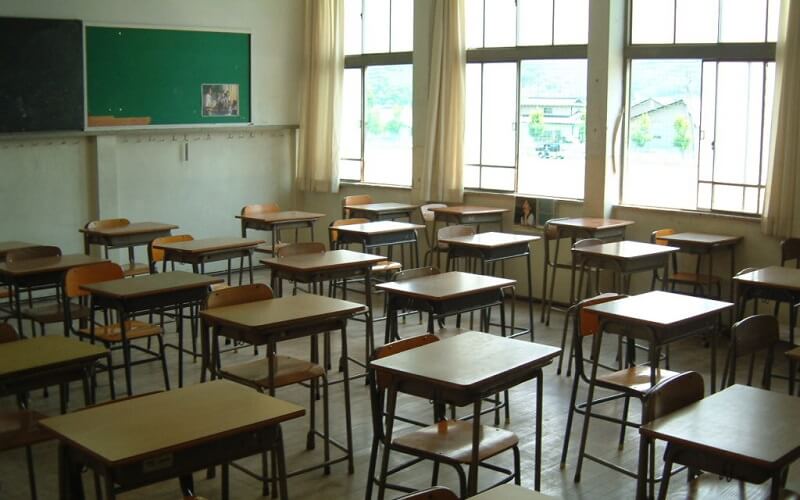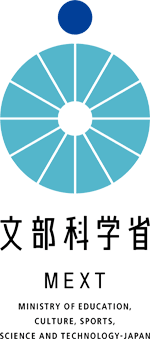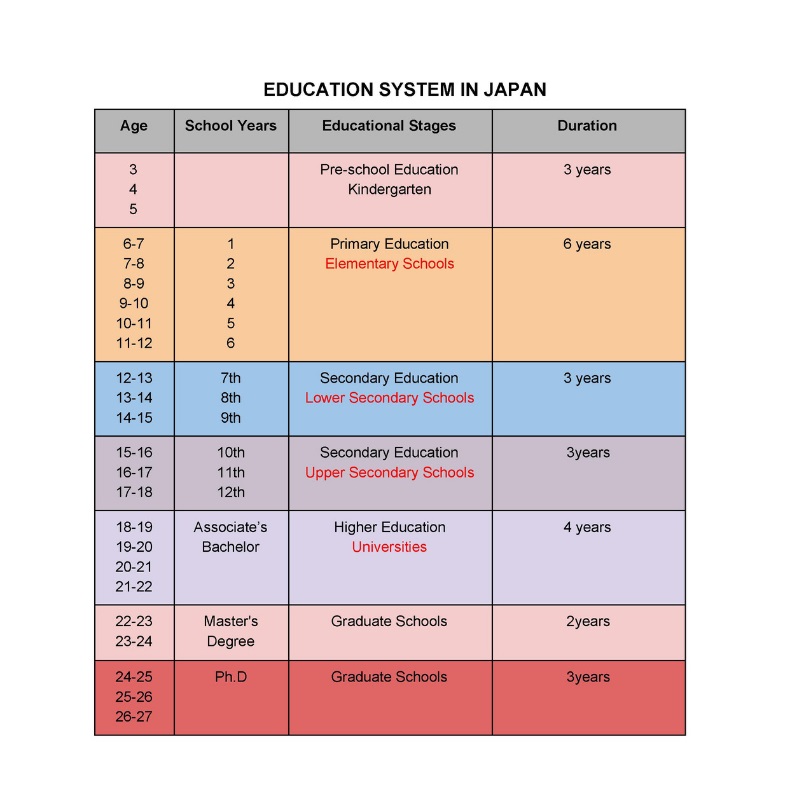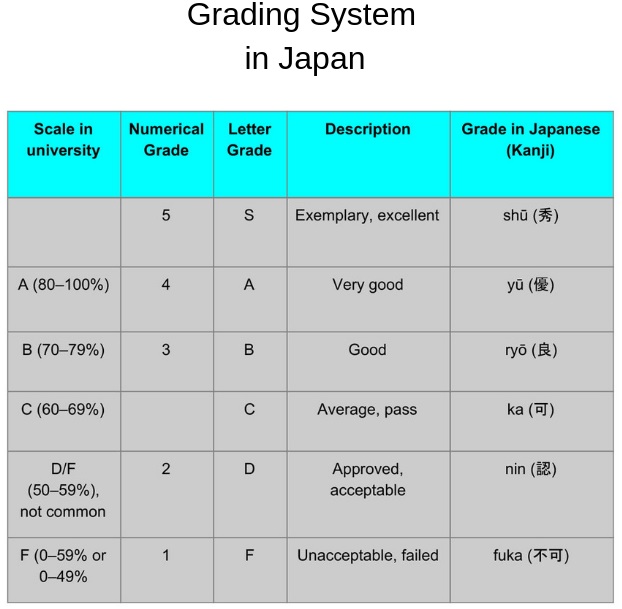The education system in Japan sets high standards, which every country aims to. No doubt, Japan is leading in numeracy and literacy skills all over the world.
According to the Program for International Student Assessment (PISA), Japan placed number four (4) in math, science, and reading worldwide. In the assessment conducted by the TIMS (Trends in International Mathematics and Science Study), the country got fourth and grade eight students have consistently ranked top five globally in mathematics and science.
How did the country reach this point? This article will discuss the history of the educational system in Japan and how it reformed. Keep on reading to learn more!
History of Japan’s Education System
Before the Reformation
Early education in Japan started in some form during the 6th century through the introduction of the Chinese system of writing along with the teaching of Buddhism. By the end of the Heian period, there were schools established by the nobility, in the capital and provinces.
Learning becomes more widespread during the Edo period or Tokugawa period, which later left a valuable legacy in the education of Japan. Rapid transition of formal education was visible at that time, where they emphasized morality and included both military and literary studies. Not only reading and writing were part of the teaching, as well as arithmetic, calligraphy, and the use of the abacus.
Both elite and ordinary people received an education, which then resulted in an increasingly literate population. And temples became schools during this period.
By the end of the period, there were 11,000 schools, attended by 750,000 students.
During the Reformation
The education system in Japan started to reform after the defeat in world war 2 in 1945. A new constitution proclaiming pacifism that banned the three subjects which had encouraged militarism, namely Morals, Japanese History, and Geography, and the textbooks in these subjects were also eliminated.
There were many reforms carried out during the post-war period that includes the establishment of boards of education, a single-track system, known as the 6-3-3-4 system, the abolition of Traditional Japanese Schools, and the establishment of a university-based pre-service training system, and so on.
As the reformation in the education system advances in 1962, they began establishing colleges of technology to provide training to workers that were in demand at that time due to the rapidly expanding industrial sector. Since then, colleges were scattered throughout Japan and even continue until today. College of technology in Japan or known as Kōsen Colleges of Technology, is a 5-year training, focusing on engineering, and mercantile marine studies.
The 1990s marked the introduction of unified secondary education schools. This widespread change of the education system in Japan was influenced by the German educational system (faculties) and the US system (general education, at the higher education institutions).
During 1980, they centered their attention on how to internationalize their higher education. Due to this, international students need to complete a Japanese language test to be able to study in Japan. There was an increase in the proposed number of study programs, which include the English language due to modern internationalization strategies.
There were various programs implemented brought by the internationalization, such as CAMPUS Asia – an exchange program between Japan, China, and South Korea, whose purpose was to build up students’ mobility. One of its projects, called Reinventing Japan, aimed to help in building a connection between Japanese HEI and foreign HEI.
Another project launched in 2009, the Global 30 Project. That implemented different approaches to internationalize the academic system particularly, at the Master and Doctoral levels. The project also aimed to create quality services for international students.
MEXT (Ministry of Education, Culture, Sports, Science, and Technology) is responsible for all education in Japan. MEXT distributes guidelines for the national curriculum of primary, lower, and upper secondary school Education.
Besides, it continuously offers a scholarship for international students who wish to study in Japanese universities. It shows that MEXT continues to improve the education system in Japan until today.
To learn more about MEXT, please click the logo.
Educational Stages
Primary Education
Grade school or elementary school and junior high school is compulsory for Japanese nationals. By the end of January, the family whose child qualified for the next school year enrollment will get a notice from the municipal office ( city hall). Usually, in Japan, the school year begins in April, and classes are from Monday to Friday or either Saturday. And most of the elementary schools have no admission exam.
Elementary Schools are composed of different academic subjects such as the Japanese language, social studies, arithmetic, and science. There are non-academic subjects also like art (including Japanese calligraphy), handicrafts, music, traditional poetry, homemaking, physical education, and moral education. Moreover, they often used information technology to enhance education. Therefore, most schools in Japan have access to the internet.
Secondary Education
Junior High School
As of 2012, there are 3.5 million primary school students in Japan. In junior high school or lower secondary school, it has an average of thirty-eight students per class. There are assigned teachers in each class. Lower secondary school teachers also use technologies as a tool in teaching such as radio, computers, television, projectors.
The juniors’ curriculum covers the Japanese language, social studies, mathematics and science, and also music and physical education. Students, in general, are exposed to industrial arts and homemaking.
MEXT noticed that teaching of all foreign languages especially English needs improvement. And to improve instruction of spoken language, the Government invites some young native speakers of English to serve them as assistant teachers. Today, the program is growing, and English is becoming a compulsory part of elementary school.
Senior High School

Full-time is the most common type of upper-secondary school. General programs offered academic programs as well as technical and vocational courses for students preparing for higher education. More than 70% of upper-secondary school students enrolled in a general academic program in the late 1980s.
First-year programs include basic academic courses, such as Japanese language, English, Mathematics, and Science. Vocational-technical programs include several hundred specialized courses, such as information processing, navigation, fish farming, and business. There is also training for disabled students, particularly at the upper-secondary level, to teach students how to be independent within society.
Higher Education
Universities and Colleges
There are types of institutions in Japan for higher education:
-
- at universities
- junior colleges
- colleges of technology
- special training schools
- community colleges.
These institutions provide four-year training leading to a bachelor’s degree, and some offer six-year programs leading to a professional degree. But the majority of college students in Japan attend full-time day programs. Some even desire to be graduated from the nation’s prestigious schools to land great job opportunities in the future.
But Japan has also numerous college students who failed to graduate, in short undergraduates. The major reason for it is due to lack of funding. But to resource funds, the government-supported Japan Scholarship Association allows students to borrow money, and they can also work part-time while studying.
Graduate School
Japan’s higher education is provided by both universities and junior colleges. Its method of acceptance is different from other western schools such as they are based on entrance exams, not GPAs (Grade Point Average).
Furthermore, few undergraduate students of the non-science course will proceed to graduate school, only those who want to work in academia. But during the 21st century, it has evolved a little in which the government requires those who become lawyers to attend a graduate school. And also, business schools are available in some major universities. As the Japanese economy grows, there is a higher demand for workers who graduated with higher education.
There are numerous courses offered in universities such as in the field of Medicine, Business, Information and Communication Technology, Engineering, and more. Some study options you can choose from as shown below.
-
- Masters in Information Sciences in Japan
- Masters in Economics in Japan
- Masters in Materials Science in Japan
- Masters in Management and Organisation in Japan
- Masters in Environmental Engineering in Japan
Japan Grading System
High school grading system using a numerical grade from 5 to 1. The highest or excellent is number 5 while the lowest or fail is number 1. On the other hand, national universities mostly used a 4-scale grading system with A, B, C, and F. The highest is A while the below-average students are given an F but can do some retakes in the next semesters.
Every country has its own system in education to enhance the skills of their learner from the lower level to the higher level, and Japan is no different. The country’s educational system maintains a high academic standard by enhancing the quality of all programs at all levels. They will no doubt continue to produce excellent students, not only today but also in the future.












